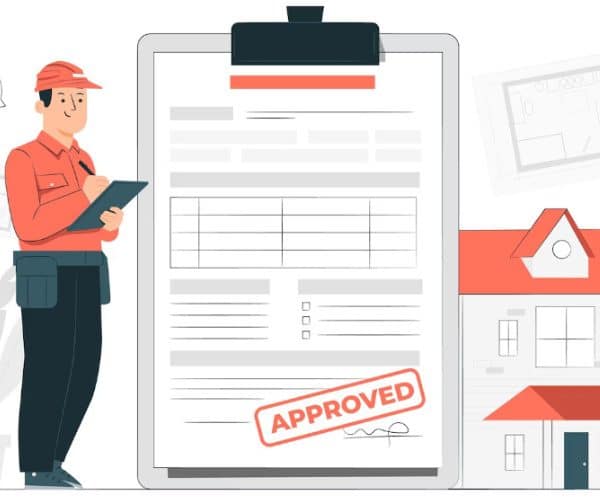Businesses offer net payment terms to customers so that they can defer the payments till the set deadline. These terms moderate how long a customer can take to make the payment.
In most cases, any delay after the deadline can result in penalties. All these terms are decided between the two parties. There are several types of net payment terms.
Types of Net Payment Terms

The following are the main types of net payment terms:
Net 30/60/90
These net payment terms represent the time before which the invoice is due. The 30, 60, and 90 represent the number of days for payment.
Net 30 means that the business has to pay the bill within 30 days, Net 60 means the bill is due within 60 days, and is the same with Net 90. Depending on the type of the business, it may be reduced to Net 15 and increased to Net 180 as well.
Often, the start of the countdown for payment s decided by the selling party. Some may set the starting date when they create the invoice and some may start the countdown when the buyer receives the services or goods.
Such things should be communicated clearly to the buyers because there are penalties for late payments in many cases.
Early Payment Discount
Under this type of net payment term, the buyer gets a discount if the payment is made before the due date. There is a special way to write this net term on the invoice. Let’s understand it with an example.
Suppose a business wants to offer a 5% discount if the buyer pays the bill within 10 days while the actual deadline is 30 days from the issuance of the invoice. On the invoice, this will be mentioned as follows:
5/10 net 30
The first figure is the discount rate, next comes the deadline to avail the discount and, after that is the actual deadline.
End-of-Month Terms
The end-of-month net payment terms allow the customers to delay the payments for a certain number of days after the end of the month. In this case, the selling party decides the deadline.
It is known as net X EOM, where X is the number of days after the month’s end. Let’s understand it with an example.
If an invoice says net 5 EOM, it means that the buyer can pay 5 days after the end of the month in which the invoice was issued. So, if the invoice was issued on June 1st, the payment can be made by July 5.
There are several factors that businesses should consider before choosing a type of net payment term.
How can Businesses Choose the Correct Net Payment Terms?
Here are some of the ways that businesses can use to choose the correct net payment terms:
Carry Out Industry Research
Before a business offers net payment terms to the customers, thorough market research is essential. Analyze what net terms other businesses in the market offer to the customers.
This is because the customers may do their own market research to find businesses that offer favorable terms. So, by doing industry research, businesses don’t lose opportunities to have customers purchase from them.
Research also informs about the set benchmark. Knowing this, businesses can create flexible net payment terms.
Understand the Business Cash Flow
The next thing to consider is the business’s cash flow. This is crucial because offering longer net payment terms can impact the cash flow negatively.
Suppose a business has to pay overheads on a monthly basis. If this business offers net payment terms of 60, 90, or 180 days, the payment of these overheads can become a challenge.
For this company, Net 15 or 30 is more suitable so that they can receive payment from customers on time to pay their own overheads.
Analyze Relations/Payment History with the Client
Another important factor is to evaluate the customer’s history in terms of payment. This is because not all customers pay on time. This means that giving them favorable net payment terms means that the payment will be even more delayed.
On the contrary, customers who are punctual on payments can be given flexible terms for retention.
Customize Net Payment Terms
There are no hard and fast rules that businesses have to abide by when it comes to net payment terms. If the business has the capacity to manage, each customer can be given customized payment terms.
Also, read about how to get a Warehouse License
Advantages of Offering Net Payment Terms for Sellers

Below are mentioned some major advantages of offering net payment terms to the customers:
Increase in Sales
Net payment terms can increase revenue generation for businesses if suitable terms are offered. This gives customers time to sell the products before making the payment.
The more customers a business can attract by giving flexible terms, the more sales can increase.
Clear Payment Timelines
One of the reasons for payment delays is that the deadline is not communicated properly. With net payment terms, the deadlines and discounts are clearly mentioned on the invoice.
This not only creates ease for the buyer but also for the seller. They have a complete record of these terms and can manage invoices accordingly.
Competitive Advantage
Businesses that offer net payment terms can gain a competitive advantage over other businesses. Let’s take an example of two businesses. One demands that the customer pays immediately after the purchase.
The other business allows the customer to pay the bill within thirty days (Net 30). Customers are more likely to purchase from the second business because they get ample time to make the payment.
Improve Customer Relations
All the above-stated advantages result in improving the business relations with the customers. This is because giving customers time to make payments means that the business understands their situation.
Any business that provides easy payment terms is more likely to develop a loyal customer base.
Despite these advantages, net payment terms may have disadvantages as well.
Challenges in Setting Net Payment Terms
The following are the major challenges that businesses may face in offering net terms:
Delays in Meeting the Financial Targets
The biggest disadvantage of net payment terms is that businesses may face delays in meeting their financial targets. This is because even though the products/services from your end have been delivered to the customers, their payment is still pending.
This payment may not be paid till the end of the deadline or there may be more delays. In this case, businesses may find it hard to pay salaries, rent, utilities, insurance, taxes, etc.
Tracking Debts
Other than tracking the customer payments for purchases, there are debts involved as well in many cases. This means that businesses now have to monitor both regular payments and debts.
Impact on Profit Margin
Net payment terms that offer discounts to customers on early payments can affect profit margins as well. This is because not all customers first have to sell products to arrange capital for payment.
If customers have spare capital, they can pay on time and avail the discount. If this becomes the norm, businesses may receive timely but discounted payments.
Conclusion
Businesses should definitely offer net payment terms if it is the norm in their industry. Even if it isn’t, setting these terms can set them apart in the market and give them an edge.
Net payment terms have benefits for sellers and buyers. To prevent disadvantages. The terms should be crafted smartly so that they provide ease to the customer and don’t hurt the seller’s profitability.



